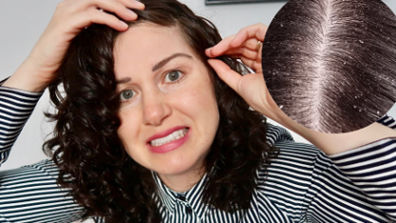If your hair has been looking lifeless, dry, or dull lately, the culprit may not be just the changing weather or stress. Chances are, you’re dealing with product buildup. This sneaky layer of residue can weigh your hair down, cause dryness, and even lead to thinning hair if left unchecked. But don’t worry—there are effective solutions to restore your hair’s natural bounce and shine.
In this post, we’ll explore what buildup is, how it affects your hair, and, most importantly, how you can get rid of it using various methods, including natural remedies and specialized products.
What is Hair Buildup?
Hair buildup happens when styling products, minerals, oils, or environmental pollutants accumulate on your scalp and strands. Your scalp or hair doesn’t absorb this residue, so it just sits there, blocking nutrients and suffocating your hair.
Whether you use a lot of styling products like mousse, gel, or hairspray or live in an area with hard water, your hair is exposed to different sources of buildup daily. Over time, this accumulation can create the appearance of dull, dry hair and even clog your hair follicles, which could impede hair growth.
How to Identify Hair Buildup
Not sure if you’re dealing with buildup? Here are some telltale signs that may indicate your hair is bogged down by excess residue:
- Your scalp feels oily, but your hair is dry. This paradox happens because your scalp is overproducing oil to compensate for dryness caused by product residue.
- Your hair feels unclean, even after washing. If you’ve shampooed your hair, but it still feels dirty or heavy, buildup could be the reason.
- You’re noticing more dandruff or an itchy scalp. Product residue and oils can trap dead skin cells on the scalp, leading to flakiness and irritation.
- Hair appears dull and lifeless. Buildup blocks light from reflecting off your strands, leaving your hair looking flat and dull.
- Hair feels rough and heavy. The layers of residue can weigh your hair down and make it feel less smooth to the touch.
If any of these symptoms sound familiar, it’s time to closely examine your hair care routine.
What Causes Hair Buildup?
There are several common culprits behind hair buildup:
- Styling Products: Products containing silicones and polymers are particularly notorious for leaving residue on your hair. Even though they promise moisture and shine, many don’t wash out with regular shampoo.
- Pollutants: Dust, smoke, and environmental toxins can cling to your hair, dulling its vibrancy and leading to buildup that may not be removed during normal washing.
- Hard Water: Minerals like calcium, magnesium, and even heavy metals in hard water can bind to your hair, causing it to become dry and brittle over time.
- Natural Oils: Sebum, the oil produced by your scalp, can mix with product residue, leading to even more buildup if you try to wash it off too frequently.
- Scalp Conditions: Skin issues like psoriasis or seborrheic dermatitis can also contribute to scalp buildup, causing flaky patches or a feeling of dryness that regular shampoo can’t fix.
Buildup and Different Hair Types
Hair buildup affects everyone, but how it manifests depends on your hair type:
- Fine Hair: Buildup is especially visible on fine hair. Products that claim to add volume may contain silicones that leave behind residue, making your hair feel greasy or weighed down.
- Medium Hair: Medium hair can hide oil better but also traps more product. This type of hair often feels dull and lifeless when coated with residue.
- Coarse Hair: Coarse hair is especially prone to buildup, as its thick strands can hold onto more products, pollutants, and oils. This can make it feel heavy and cause dryness, especially at the roots.
How to Remove Hair Buildup: 4 Pro Tips
Now that you know what buildup is and how it affects your hair, let’s dive into solutions. Here are four effective methods for eliminating buildup and restoring your hair’s natural vibrancy:
-
Use a Clarifying Shampoo
Clarifying shampoos are specifically designed to deep clean your scalp and hair, removing residue left behind by styling products, pollutants, and hard water. These shampoos are stronger than regular shampoos, which is why they should be used once a week at most.
For example, Living Proof’s clarifying detox shampoo is bioengineered to target product buildup, pollutants, and minerals, helping you start fresh. Follow up with a leave-in scalp treatment if you experience irritation after using a clarifying product.
Pro Tip: Don’t overuse clarifying shampoos. Once a week or every two weeks is enough to keep buildup at bay without stripping your hair of its natural oils.
-
Try Micellar Water
Micellar water, often used as a gentle makeup remover, can also be found in certain hair care products. This ingredient attracts and dissolves impurities without harsh scrubbing. It’s an excellent option for sensitive skin or dry hair, as it’s less aggressive than a clarifying shampoo.
How to Use: Apply a micellar water-based hair product to wet hair, gently massage into the scalp, and rinse thoroughly. Use once a week for a gentle, hydrating cleanse.
-
Rinse with Apple Cider Vinegar
If you prefer natural remedies, apple cider vinegar (ACV) is a powerful solution for dissolving residue. Its natural acidity helps break down product buildup while restoring the pH balance of your scalp.
DIY Recipe: Mix one part apple cider vinegar with one part water and use it as a post-shampoo rinse. Leave it on for a minute or two before rinsing thoroughly. This treatment can also help detangle your hair and add shine.
Pro Tip: If you color your hair, apple cider vinegar rinses can also help retain vibrancy by sealing the cuticle.
-
Add Baking Soda to Your Shampoo
Another natural remedy is baking soda, which is a powerful exfoliant that can help remove product buildup from your hair. It works by lifting residue off the hair shaft, leaving your hair feeling lighter and cleaner.
How to Use: Mix a tablespoon of baking soda with your regular shampoo and wash as usual. Alternatively, you can massage baking soda directly onto your scalp and hair before shampooing.
Preventing Buildup: Long-Term Care Tips
Once you’ve cleared the buildup, you’ll not want to keep it from returning. Here are some tips to prevent future residue:
- Look for Sulfate- and Silicone-Free Products: These ingredients often leave behind residue. Opt for lightweight, hydrating products that won’t clog your scalp or hair follicles.
- Use a Chelating Shampoo: If you live in an area with hard water, look for shampoos containing chelating agents, which bind to heavy metals and minerals to help rinse them away.
- Hydrate Wisely: Use conditioners that offer strength and hydration without the heaviness. Avoid heavy formulas, especially those containing silicones.
- Limit Product Use: Be mindful of how many products you’re layering on your hair. Sometimes, less is more.
Final Thoughts
Hair buildup can feel overwhelming, but with the right tools and understanding, you can effectively cleanse your hair and scalp. Whether you opt for clarifying shampoos, natural remedies like apple cider vinegar, or a weekly micellar water treatment, the key is to maintain a consistent routine that supports the health of your hair without causing excessive buildup.
By following these tips, you’ll soon enjoy revitalized, balanced, and bouncy hair—free from the pesky buildup that once weighed it down.



